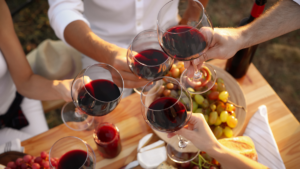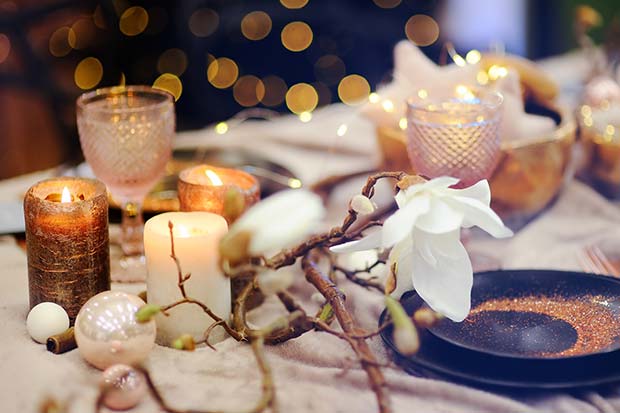
During the festive period, we often fall back on classic dishes such as oysters, foie gras, turkey and game to keep with tradition. Our wine choices also tend to be quite traditional. This year, without going over the top, why not try something different? Here are a few suggestions.
It goes without saying. It has to be Muscadet or Chablis with oysters, and Sauternes with foie gras. It’s a good Burgundy red for the bird, and a mature Châteauneuf with game. But what would happen if you veered off this track beaten by years of routine? This Christmas, why not choose a single type of wine for your festive meal? People who say they can’t tolerate mixing wines couldn’t complain! And if you don’t want to try this idea, there’s nothing to stop you using some of our suggestions for each type of wine and serving three or four different ones.
CHAMPAGNE ONLY MEAL
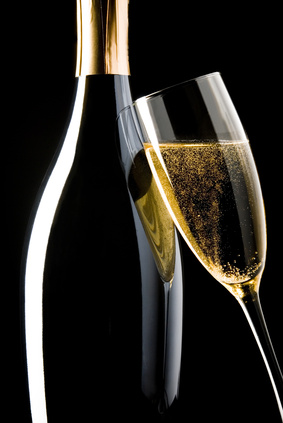
Champagne is the eternal celebration wine. It always features prominently at family gatherings and New Year parties so why not make it the only wine on the table?
With the first course:
- Champagne goes very well with oysters, especially if they are little oily and not too salty. It also works perfectly with other items in a traditional seafood platter (prawns, whelk, crab) although less well with sea urchin and raw mussels. Go for a nice and lively Blanc de Blancs, from the Côte des Blancs for example (Avize, Cramant, Le Mesnil-sur-Oger).
- As long as its woody notes are subtle, champagne also goes very well with smoked salmon. Once again, go for a young Blanc de Blancs.
- It might not be obvious, but full-bodied, high alcohol champagne pairs very well with foie gras, either terrine or pan-fried. This time, choose a rounded and powerful Blanc de Noirs perhaps from the southern slopes of the Montagne de Reims (Bouzy, Ambonnay) or, why not try a Rosé de Saignée?
With the main dish:
- In the majority of cases, champagne will go well with your Christmas bird. Its effervescence and natural acidity will lighten any fattiness and its refined aromatic qualities will not overwhelm the delicate flavours of the meat. Do pay attention to the ingredients in any stuffing you might use however as these could make the pairing less palatable.
- Top champagne obviously goes perfectly with lobster or crayfish, whether cooked simply (grilled and served with a delicate truffle-flavoured butter for example) or in a spicier sauce (Armoricaine). Simply adapt the power of the champagne to the sauce.
With the cheese dish:
- Champagne is an unusual pairing for cheese although some combinations are ideal. Lighter, lower alcohol champagne is perfectly at ease with Brie, Coulommiers or a firm Camembert. Delicately oxidative champagne, as older vintages often are, is delightful with Comté or a long-ripened sheep’s cheese. Blanc de Blancs meanwhile will go well with any goat’s cheese that isn’t too ripe.
With pudding:
- Champagne does not go at all well with highly sweetened flavours so forget about it. The only possible exception would be a rosé champagne with a red fruit pudding (but it’s not really the season!).
WHITE WINE ONLY
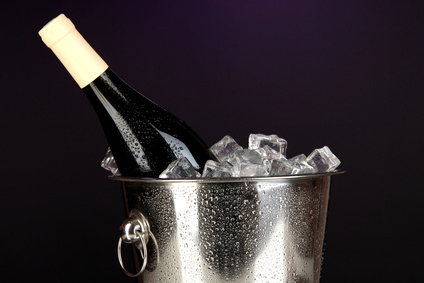
White wine is undoubtedly the easiest type of wine to serve throughout a traditional festive meal.
With the first course:
- Suggesting a good dry white as the perfect accompaniment to oysters and seafood will not exactly come as a revelation. It might be a little less glamorous than Champagne, but Muscadet, with its acidic, fruity and saline qualities, is perfectly appropriate here. The same goes for Chablis (a generic one will suffice or an unoaked premier cru) and Alsace Riesling – again you don’t necessarily need a top vintage.
- There is no problem either with smoked salmon. Stay with the Chablis or Muscadet, or try a youngish Sancerre.
- Foie gras throws up a few more challenges. It’s probably best to avoid the liveliest whites (Muscadet, Chablis, Riesling) and go for a fuller, but not too aromatic wine from Burgundy (Meursault would be good) the Savoie (Chignin-Bergeron), or the northern Rhône (Saint-Joseph, Condrieu).
With the main dish:
- There are no problems choosing an accompaniment for the Christmas bird. White wine with some acidity will cut nicely through any fattiness. A Chenin from the Loire (Montlouis, Vouvray, Saumur) is ideal. Riesling, of course is just as good and so is an Arbois Chardonnay.
- For a lobster or crayfish-based dish the choice is vast. Of course, it must be a wine of illustrious origin. A few good examples would be Corton-Charlemagne, Meursault, Puligny-Montrachet, Hermitage, Châteauneuf-du-Pape and Pessac-Léognan. Try to match the qualities of the wine to the accompanying sauce. For example, Hermitage and Châteauneuf-du-Pape are robust enough to withstand a slightly spicy sauce.
With the cheese dish:
- No problems here. To refer back to our article on cheese and wine pairings, 90% of cheeses go better with white wine than red. Go for wines with substance and that aren’t too aromatic. You don’t necessarily need to serve a grand cru either, as cheese often goes better with cleaner, simpler and more “direct” wines.
With pudding:
- Although finding a match is a little easier than it is with champagne, few puddings bring out the best in a dry white wine. A fruit tart is one possibility, but this isn’t typical fayre at this time of year.
THE RED WINE ONLY MEAL
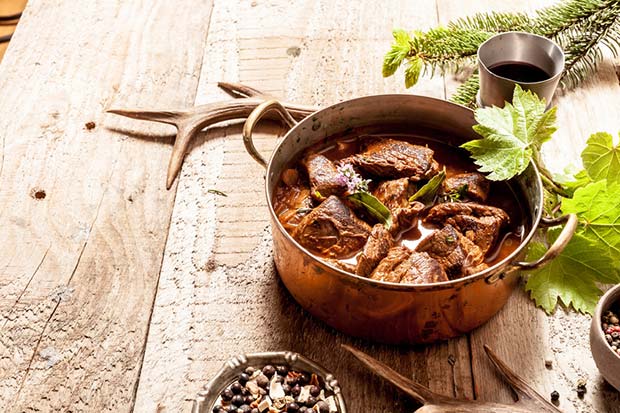 Considering the types of dish traditionally eaten during the festive season, this is clearly not the easiest wine to serve throughout a celebratory meal.
Considering the types of dish traditionally eaten during the festive season, this is clearly not the easiest wine to serve throughout a celebratory meal.
With the first course:
- Of the traditional starters for this time of year, only foie gras can be paired with a red wine. Duck liver is more suitable than goose liver. Choose a mature wine as its tannins will have softened. Reds from south-western France seem to be best, such as Bordeaux from a good line (left or right bank), Madiran or Cahors
With the main dish:
- For poultry (turkey, duck, goose etc) choose a delicate and livelier red (to balance the fattiness). Burgundy wines meet these criteria perfectly and are the top accompaniment for a Christmas bird. An Alsace or Jura Pinot Noir makes an excellent alternative. A slightly mature Côte-Rôtie is also a good choice, or even a 10 to 15-year-old Morgon or Moulin-à-Vent produced the Burgundy way, such as Château des Jacques.
- With game, you are spoiled for choice when it comes to red wines. The majority of top French reds, especially after maturing for 15 years (and sometimes considerably longer) are the perfect pairing for game. If you are serving game of the feathered variety go for Burgundy; for venison, a top mature Bordeaux or Hermitage is ideal; a 15-year-old Châteauneuf-du-Pape or Bandol is also an excellent choice for stronger game!
With the cheese dish:
- If you insist, red wine will go well with a ripe Saint Nectaire or a Salers. There’s no point opening your best bottle for this. A young Saint Joseph or Crozes Hermitage will suffice.
With pudding:
- However hard we look, it’s going to be difficult to find a pairing for dry red wine. Some southern Rhône wines, made exclusively from Grenache in a powerful year (such as 2007 or 2009), should be okay with a chocolate gateau. But only because it’s you!
SWEET WINE ONLY MEAL
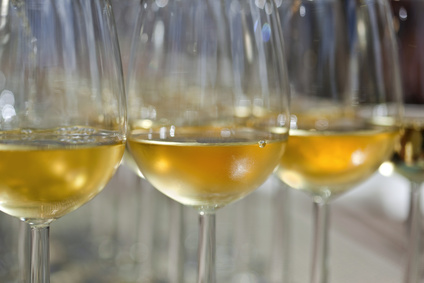 The challenge is huge but at iDealwine we are not afraid to rise to it! Obviously though, the choice of dishes is more limited.
The challenge is huge but at iDealwine we are not afraid to rise to it! Obviously though, the choice of dishes is more limited.
With the first course:
- Forget about oysters and smoked salmon. The only dish that will go with sweet white or dessert wine is foie gras (pan-fried or terrine). If you know a lot about the wines in your cellar, do not open your richest and most concentrated Sauternes for this pairing. Instead, pick a wine with a good level of acidity behind the sugar such as Vouvray, or a Chenin-based Montlouis wine from the Loire. Late harvest Alsace wines (especially Pinot Gris, as Gewurztraminer is too aromatic for foie gras) are ideal. You could also go for a Jurançon as these wines generally have lower sugar concentrations. If made from 100% Petit Manseng, they have a fine acidic quality to temper the overwhelming effect of the liver.
With the main dish:
- Some Christmas recipes for poultry include a foie gras or dried fruit (apricot, date) stuffing. These dishes could go nicely with a sweet white wine if, once again, you choose one with more moderate residual sugar concentrations. A demi-sec from the Loire (Vouvray or Montlouis) would also go well as would lower sugar Jurançons. Another example of wines made for this type of dish are the Jean-Michel Deiss Alsace grands crus, such as Altenberg de Bergheim and Schoenenbourg. These wines are still very rich but have a more subtle sweetness.
- A number of seafood recipes include spices such as vanilla, coconut milk or even curry. The rich texture of crayfish or lobster served with this type of sauce could pair perfectly with a sweet white wine with moderate sugar levels. It doesn’t matter whether you go for a Sauternes, a Loire or an Alsace wine – it is the subtlety of the sweetness that will make this pairing work. Once again, the wines from the Deiss estate, mentioned above, would be a pleasant surprise.
With the cheese dish:
- Stay with tradition as sweet white wine can be served with the majority of blue cheeses, especially Roquefort. Sauternes pairs very well, as does late harvest Pinot Gris from the Alsace. You could also try a sweet red wine such as Port or Rivesaltes (not forgetting Maury and Banyuls) with this type of cheese or indeed with a British Stilton. A very ripe Brebis Fermier from the Pyrenees can be enjoyed with a local Jurançon in much the same way it would be traditionally eaten with cherry jam or quince jelly.
With the pudding:
- Plenty sweet white wines from all regions of France pair easily with fruit-based puddings, but these are not very typical at a Christmas meal.
- Chocolate on the other hand is a prominent feature and when a pudding is based on dark chocolate, sweet and powerful wines come into their own. We recommend the same wines as we do for blue cheeses, such as Port, Banyuls, Rivesaltes and Maury, especially if they have had a few years to mature.
Access the wines on sale
Further reading onthe iDealwine Le Blog:



